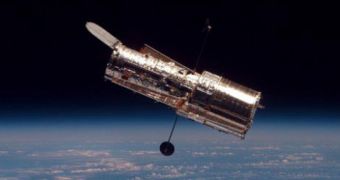At last, after more than a month of constant glitches and failed resurrection attempts, the 18-year old Hubble Space Telescope has once more opened one of its eyes towards the sky. The device seems to have recovered well after the mishaps sent it to an idle safe mode state and has currently resumed its space photographing activity. Following the success of switching to the “Side B” control unit, the first instrument to be reactivated on Hubble was the Wide-Field Planetary Camera 2.
These are the last pictures that this version of the camera is going to take, since it is scheduled for replacement during the next year's last servicing mission for the telescope. Next in line for reawakening is the Advanced Camera for Surveys (ACS), which failed last week because of a timing issue between two program routines. It has only one operational part, the Solar Blind Channel, its ultraviolet sensor, as the other two channels collapsed due to power glitches. Currently, the Near Infrared Camera and Multi-Object Spectrometer (NICMOS) infrared camera which focuses on distant galaxy observations is undergoing compatibility tests with “Side B”.
“It is a relief that everything is working well,” shares the Hubble mission office's head from the Space Telescope Science Institute in Baltimore, Maryland, Rodger Doxsey. “We did a few calibration observations, which worked fine, and then restarted science observing with it over the weekend.”
The problems affecting the telescope emerged on September 27th and eluded the NASA technicians for almost a month also due to the fact that the computer equipment on Hubble's board is ancient, relying on 486 Intel processors which were top notch during the time the telescope was launched (in 1990). These issues caused the postponement of the servicing mission for next year, at an undisclosed date as the replacement parts have glitches as well.

 14 DAY TRIAL //
14 DAY TRIAL //